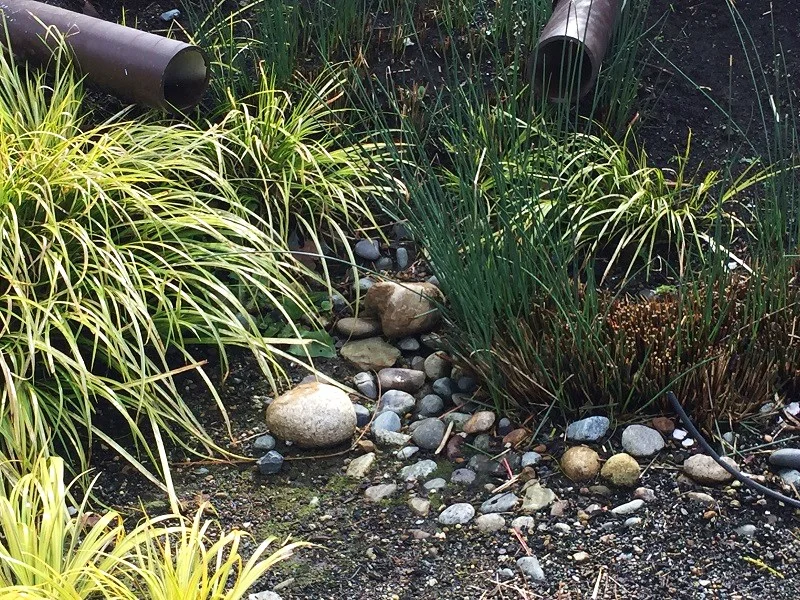An Introduction to the Pre-Planning of Your Sustainable Landscape
On a rainy morning, I walk through shallow pools of water on cement sidewalks and pass by concrete buildings. The Puget Sound looks gray, and the sky and sea blend together. Then, they appear – the red branches of red osier dogwood (Cornus sericea), yellow blades of sweet flag (Acorus gramineus), white berries of snowberry (Symphoricarpos alba), and the dark purple gleam of carpet bugle (Ajuga reptans). Suddenly, there are no pools beneath my feet; my attention turns back to the plants, and the shallow depression they are planted in. It is gradually sloped with pathways of rocks and a trickling inflow of water... a rain garden.
Rain gardens have become a tool that homeowners, developers, restoration workers and others have used to mitigate flooding in areas with high amounts of winter precipitation and large swathes of impervious surfaces. Instead of a concrete jungle, water tolerators are thriving in the moist zones like the species listed above. Drought tolerators, such as orange California fuchsia (Zauschneria californica) and green-gray Lavender (Lavandula angustifolia) are plants that can grow in the upper and drier zones of the rain garden where water is less available.
Proper plant selection and vegetation type in these systems help to maintain ecological benefits and ecosystem services. In conjunction with climatic factors, soil texture proportion, and water infiltration rate, plant selection can determine which rain gardens function as intended. Choosing plants that are well-adapted to the environment (or from a similar climate), drought tolerant, and can undergo periods of prolonged soil saturation help to mitigate excess stormwater.
This type of green infrastructure provides many additional benefits including urban heat mitigation, pollution reduction, wildlife habitat, drainage, groundwater recharge, soil nitrogen retention, and the transport of water. However, there is not a one-size-fits-all rain garden plant implementation plan. The importance of acknowledging all environmental factors of each site and making researched vegetation decisions makes it productive and exciting.
Swansons Nursery is dedicated to supporting gardeners everywhere in making sustainable environmental decisions for their landscapes. We have created two handouts. Our Rain Garden Resource List has all the leading green infrastructure resources to help you plan your Rain Garden [we suggest to check with some of these local professionals before you begin]. The other is a general plant list to get you started on proper plants for your rain garden zones.
As April showers begin, send us your local rain garden photos and let us know how your plants have functioned.
Here’s to the not so gray and waterlogged landscapes!

